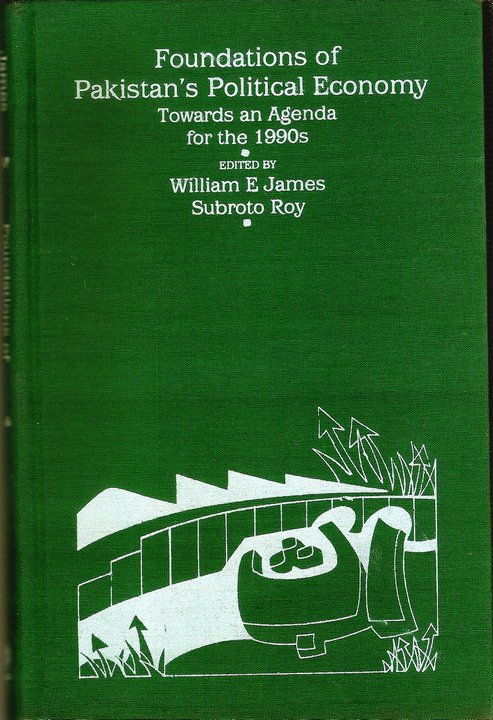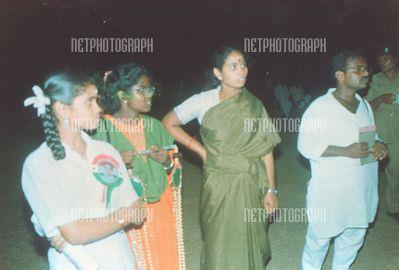My article “Haksar, Manmohan and Sonia” appeared today as an op-ed with the New Indian Express http://t.co/bRnQI1hrwy


Critique of Amartya Sen: A Tragedy of Plagiarism, Fake News, Dissimulation
























 is how consistently these works display his avoidance of all neoclassical economics, and the absence of all of what is normally called ‘price theory’, namely the Marshallian and/or Walrasian theory of value. No “neoclassical economics” anywhere here for sure!
is how consistently these works display his avoidance of all neoclassical economics, and the absence of all of what is normally called ‘price theory’, namely the Marshallian and/or Walrasian theory of value. No “neoclassical economics” anywhere here for sure! 





November 7, 2010
A Note on the Indian Policy Process
Subroto Roy
During the University of Hawaii perestroika-for-India project two decades ago, I had wished to attract Sukhamoy Chakravarty from Delhi. He very kindly met me on July 14 1987 and presented me his last personal signed copy of the famous RBI report his committee had chaired. He said he could not come to Hawaii because of ill health but he strongly recommended I take C. Rangarajan instead because, he said, Dr Rangarajan was the main author of the report. I met Dr Rangarajan in Kolkata at Jadavpur University where he was giving a speech in his role as President of the Indian Economic Society that year. Later in correspondence, he wrote to say he was over-committed but that if I took Amaresh Bagchi instead, he would help co-author Bagchi’s contribution to our project. So I commissioned Amaresh Bagchi, then Director of New Delhi’s National Institute of Public Finance and Policy.
In my next project-related visit to Delhi in December 1988, I met Amaresh Bagchi personally for the first time; he was about to retire or had already done so. He told me he knew my name from the fact the High Commission of India in London had sent the Finance Ministry in Delhi the May 29 1984 lead editorial of The Times of London on my work which had been very critical of Indian economic policy; Bagchi had been at the time in the Finance Ministry, and, as an old sarkari statist, had naturally taken exception to what I had said by way of liberal criticism. He wished to co-write his contribution for our Hawaii project with a young colleague of his; I declined permission for him to do that and told him our understanding was that Dr Rangarajan would be writing with him.
In any case, in May 1989, Amaresh was the first person to reach Honolulu in the team we had put together for the project, arriving early by several days. He was all alone and seemed miserable, so I took him to the supermarket and later invited him to dine with my small family at our home at Punahou Towers, 1621 Dole Street. It pleased him to eat some home-cooked Indian food, and he warmed slightly. He told me he had joined the Government as a bureaucrat in the income tax department and later acquired a doctoral degree in economics, though I did not get a sense that he was familiar with traditional public finance of the sort in Richard Musgrave’s classic textbook. I gifted him a copy of James Buchanan’s lectures that I had put together when Professor Buchanan had visited the University of Hawaii at my invitation in 1988 and which the University had then published with a preface by myself. He remarked he found it terrible that American supermarkets had all this canned pet food when the world was so hungry. Later I invited him to a larger dinner party again at my home before the conference began.
At the conference itself, I placed him next to Milton Friedman, which some said was a master-stroke. There was a long and somewhat heated interchange between him and TN Srinivasan, though not with Milton, as Milton was, as always, invariably polite, patient and clear-headed in argument for the two days that he stayed.
The chapter Amaresh Bagchi wrote for us in the book Foundations of India’s Political Economy, edited by myself and WE James, was useful as practically the only statement until that time on the fiscal-induced monetary weakness of India (that still continues today, indeed may have gotten worse since). It contributed to placing him in the policy-limelight in his post-retirement years. Dr Rangarajan was not a co-author after all but apparently contributed the most important paragraphs on the subject. (We have been trying for almost a year now to get the University of Hawaii to allow free republication of the book on the Internet; the original publisher, now dead, reneged on a promise to produce a paperback edition after there was leftist academic pressure on him in Delhi.)
I gave a copy of our book to Manmohan Singh when I met him and his senior aides in September 1993 in Washington at the Indian Ambassador’s Residence; I was introduced to Dr Singh by the then Ambassador of India SS Ray as the person on whose laptop computer the 1991 economic reform had been designed for Rajiv Gandhi during Rajiv’s last months, a statement accurate enough as has been told elsewhere. (Dr Singh had 20 years earlier kindly visited our then-home in Paris at 14 Rue Eugene Manuel at the invitation of my father who knew him, to advise me about economics just before I headed to the London School of Economics as an 18 year old freshman; but in 1993 both he and I had forgotten that earlier 1973 meeting.)
Today’s newspapers report Amaresh Bagchi’s passing and say that “When (Manmohan) Singh was finance minister in the early 1990s, Bagchi was one of his key advisers on fiscal policy”. Dr Singh has described Bagchi as “one of our most distinguished fiscal policy experts” and said “It is no exaggeration to state that Amaresh has been associated with almost every major fiscal policy reform in the past 30 years”.
I am afraid I disagree with the Prime Minister of India in that I do not see any “major fiscal policy reform” having taken place at all in India, just a lot of unsystematic tinkering here and there. The root cause has been the failure to face or want to comprehend the extremely dismal state of government and public sector accounts throughout the country. Without proper government accounting, there can be neither accountability nor any serious fiscal policy, and hence no serious monetary or macroeconomic policy either.
